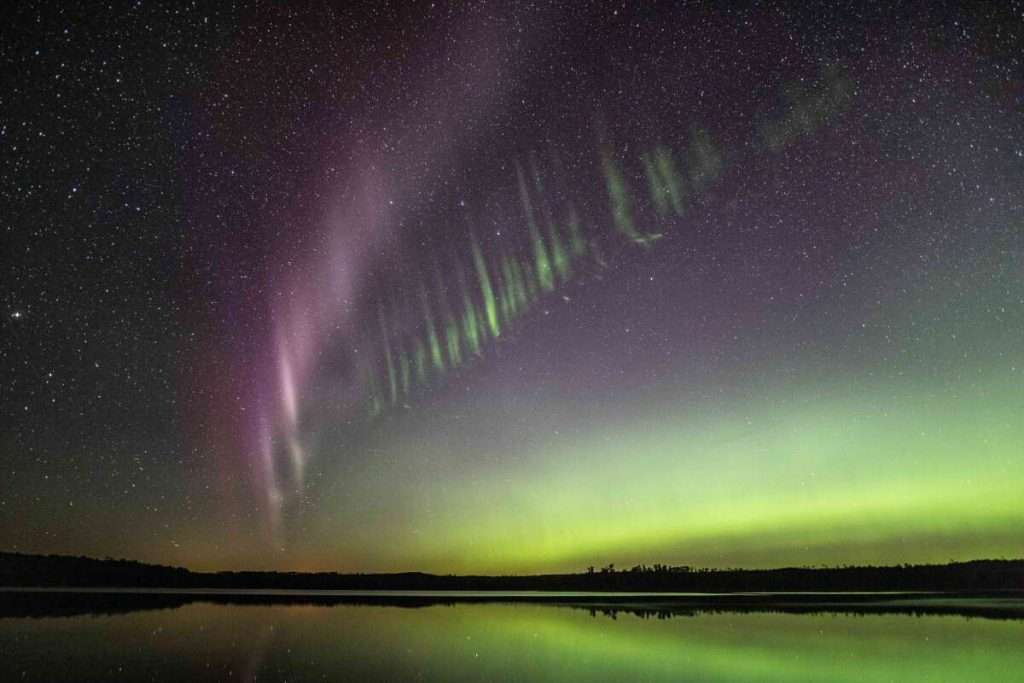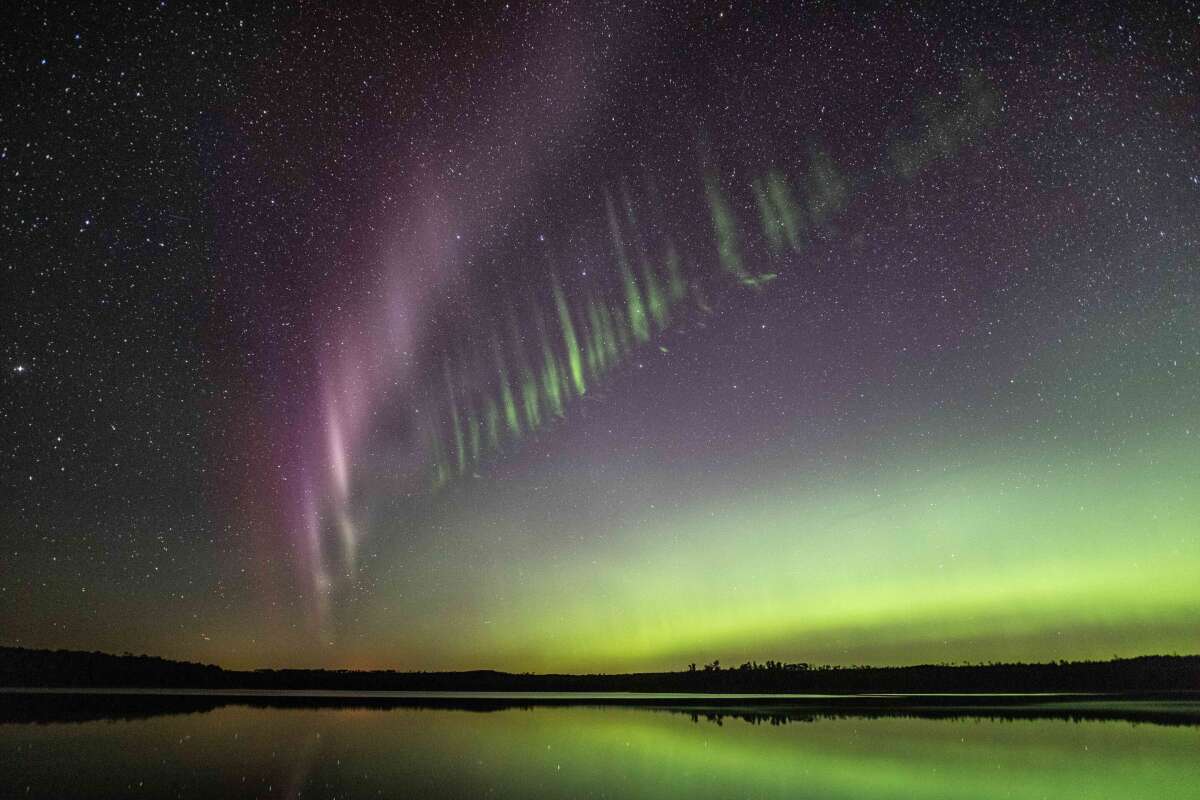
In 2018, a new atmospheric phenomenon was discovered, reminiscent of the polar lights. In the period from 2015 to 2016. Amateur astronomers reported 30 cases of observations in the sky of a purple strip, just below which, as a rule, another, green luminous structure resembling a frequency cell was noticed. This phenomenon, currently known as STEVE (Strong Thermal Emission Velocity Enhancement), is still very poorly studied. The researchers only know that STEVE is different from the usual polar lights – and many scientists believe that this phenomenon is not a type of polar lights at all – and new findings related to the formation of stripes in the phenomenon observed in the sky will help astronomers get closer to solving the mystery of this mesmerizing atmospheric phenomenon.
In this work, astronomers drew attention to the “tiny green strokes,” which are very small, almost dot sources in the structure of the “green component” of the STEVE phenomenon. In a new paper, researchers describe the properties of these “point sources.” The authors note that the observed “strokes” can be moving luminous points – which are elongated in the images in strips due to long exposure. Based on the available volume of observational data, it is impossible to make an unambiguous conclusion whether green strokes are true luminous stripes or moving point sources, but finding out this question will help to better understand the nature of the STEVE phenomenon, astronomers indicate in their work.
“I am not sure of anything about the reasons for this phenomenon,” said Joshua Semeter, a professor at Boston University, USA, and the main author of the new work. “In other pictures, these stripes look like tubes and do not resemble moving point sources, so I am not fully sure.”
Currently, Semeter’s team continues to work closely with amateur astronomers who observe and photograph atmospheric glows, such as STEVE. Usually amateur astronomers take pictures with a longer exposure than professional scientists, but for the purposes of this study, on the contrary, photos with a short exposure were used, Semeter noted.
The study has been prepared for publication in the journal AGU Advances.





